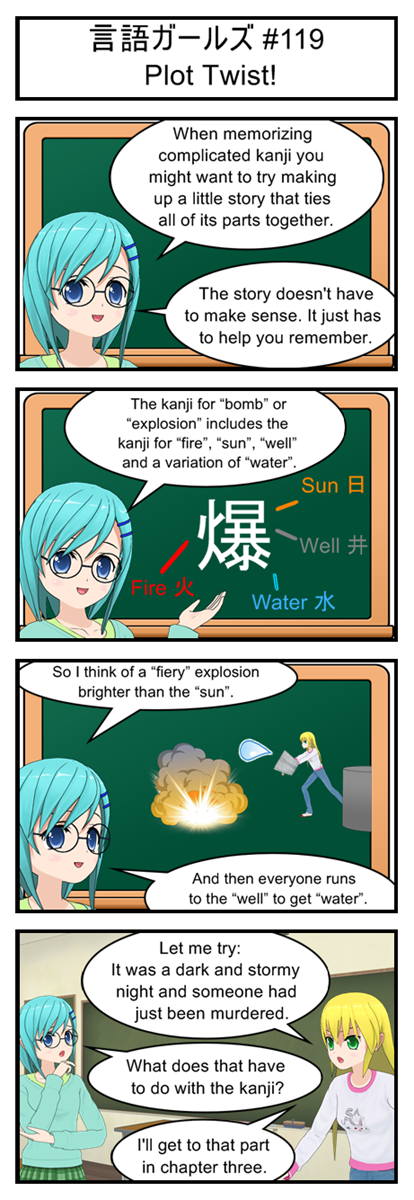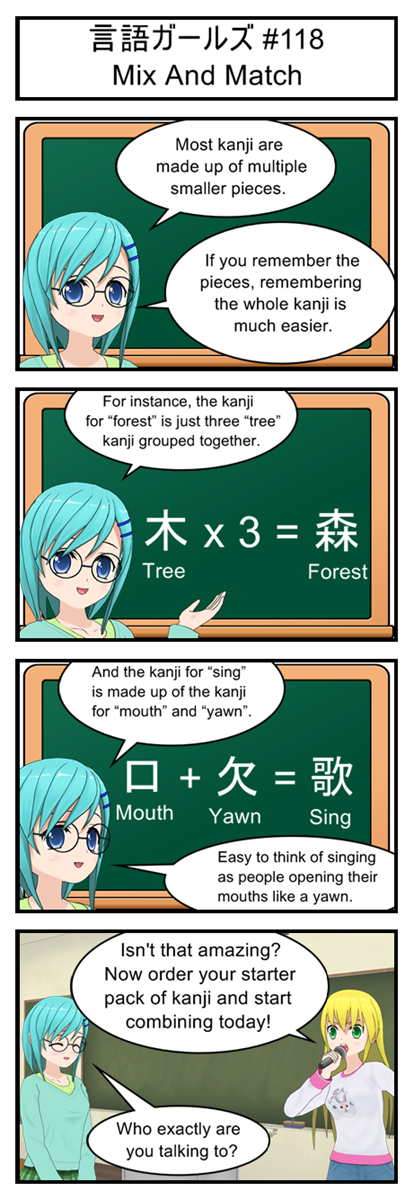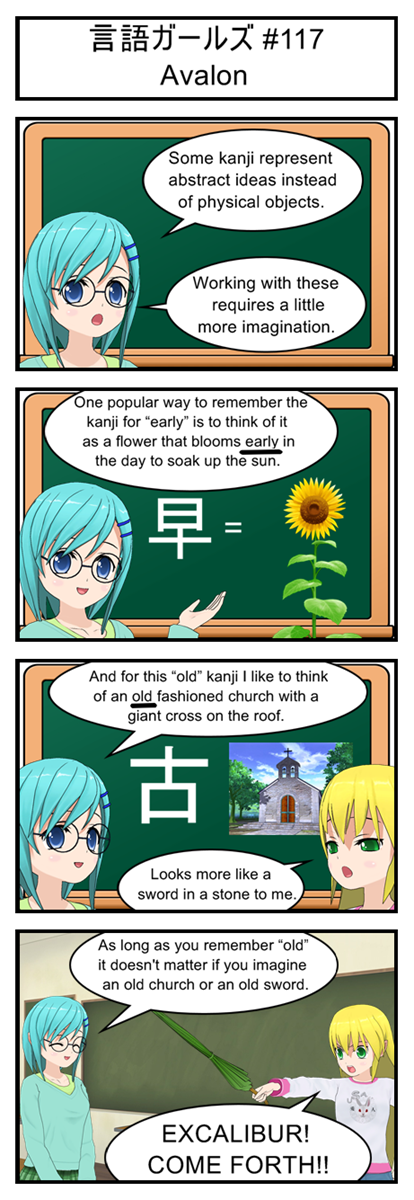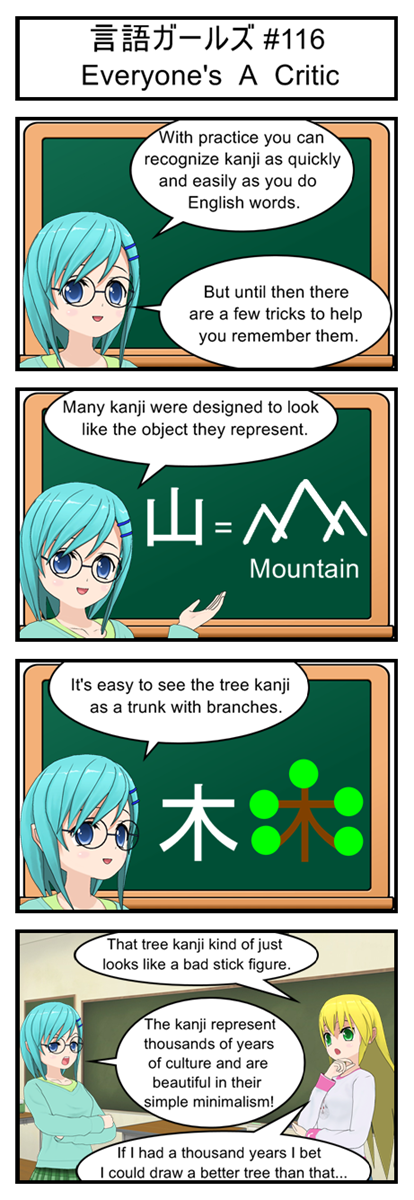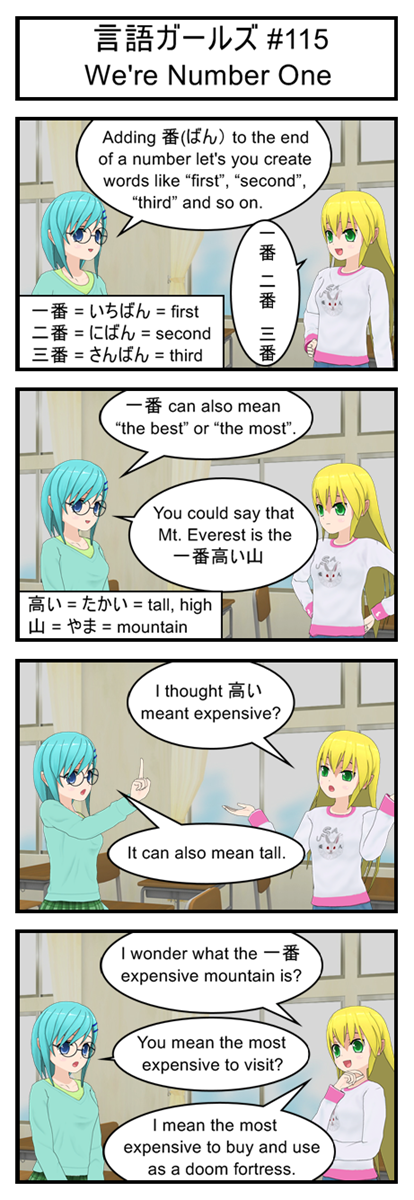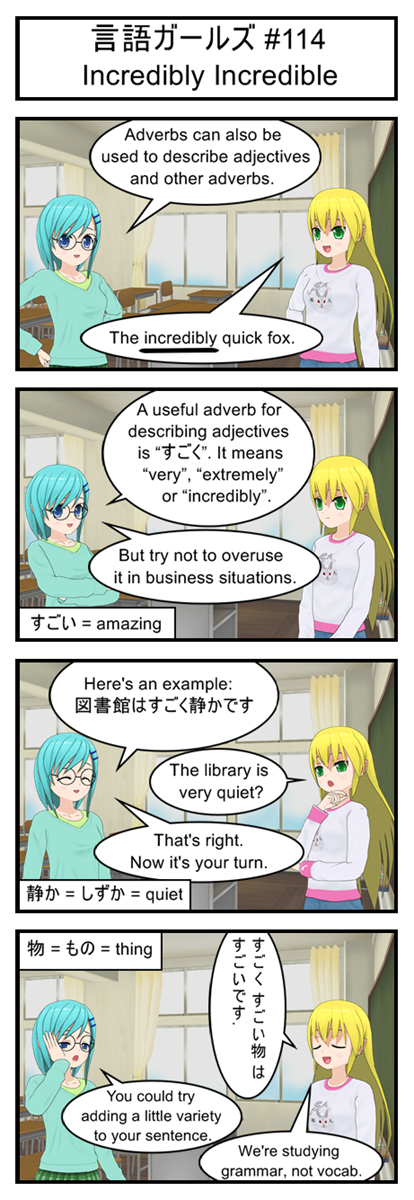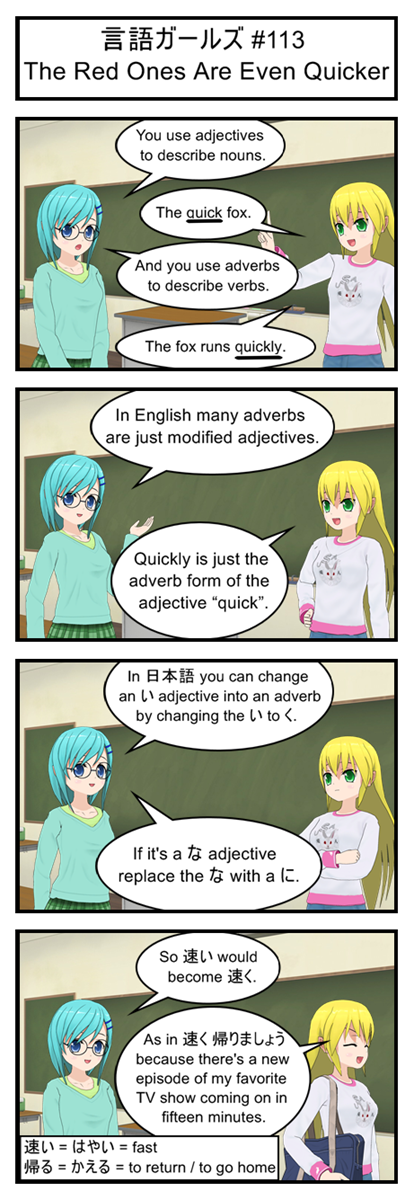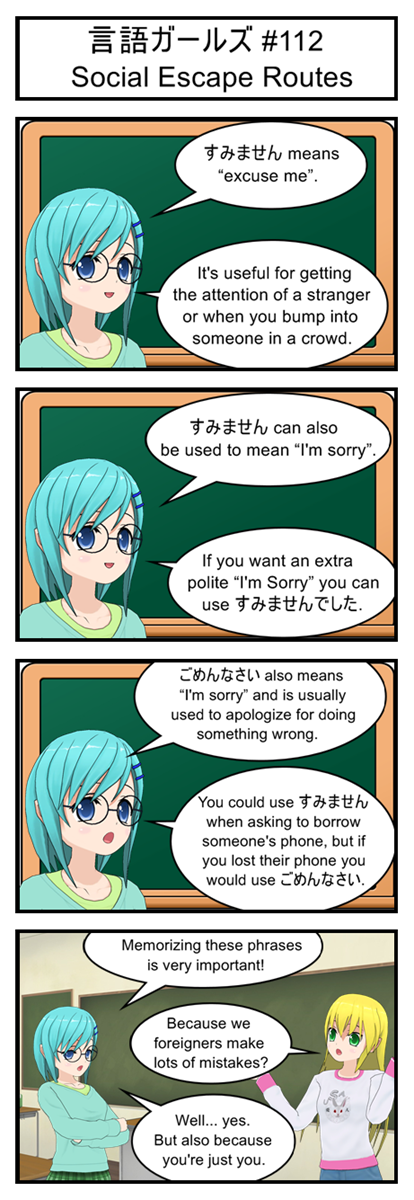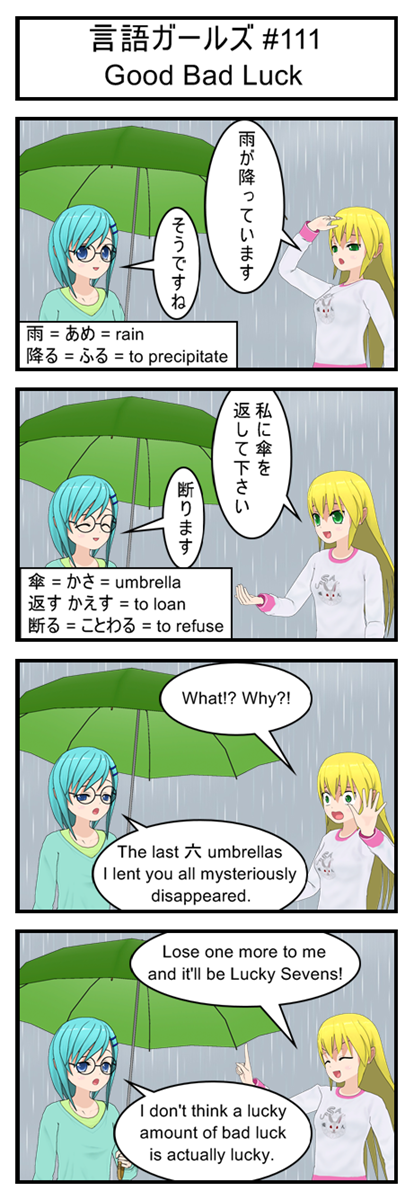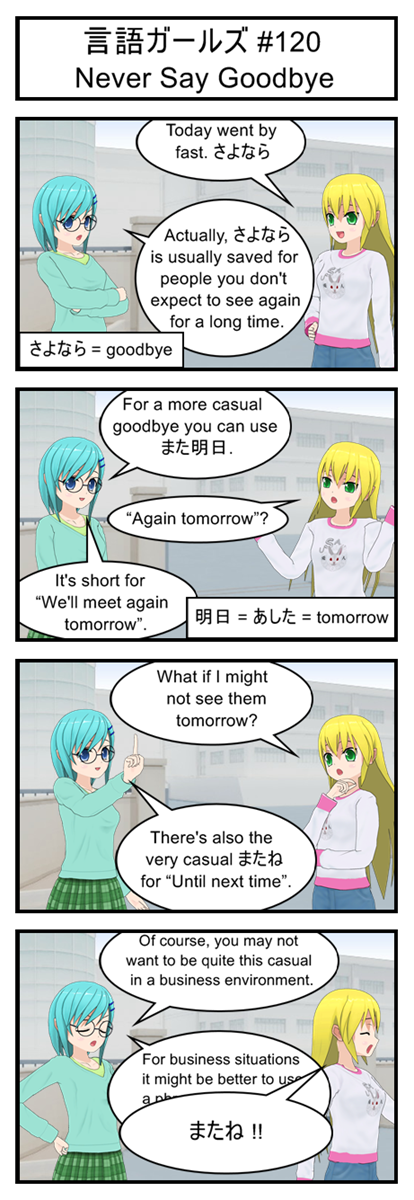
Over the past nine months and 120 strips we’ve covered the core fundamentals of Japanese. And while there’s still a lot to learn I need to take a break for a while so I can focus on some other projects that I’ve been neglecting. So for now it’s up to you to take the basics you’ve learned and chart your own study course until I get back! (Current rough estimate: Sometime in November).
Unless you’re reading this in the future in which case you can just skip straight to strip 121 and pretend nothing happened at all.
Vocabulary
さよなら = goodbye
明日 = あした = tomorrow
Transcript
言語ガールズ #120
Never Say Goodbye
Yellow: Today went by fast. さよなら
Blue: Actually, さよなら is usually save for people you don’t expect to see again for a really long time.
Blue: For a more casual goodbye you can use また明日.
Yellow: “Again tomorrow”?
Blue: It’s short for “We’ll meet again tomorrow”.
Yellow: What if I might not see them tomorrow?
Blue: There’s also the very casual またね for “Until next time”.
Blue: Of course, you may not want to be quite this casual in a business environment.
Blue: For business situations it might be better to use…
Yellow: またね!
